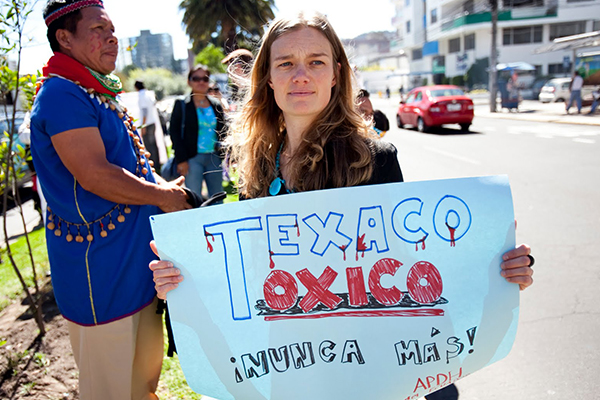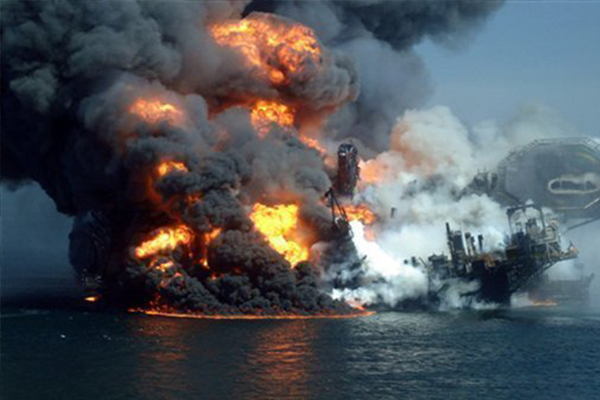To get a notification when new blog articles come out
SubscribeEnvironmental law cases that changed the environmental movement as a whole...
We've been hearing a lot this week about the federal court ruling concerning the illegal downloading of the movie Dallas Buyers Club in Australia. The case is the first of its kind and could have a significant impact on the way we regulate technology.
This got me thinking about the important environmental law cases that had a profound effect on both environmental regulation and the environmental movement as a whole.
Here is a list of 4 landmark environmental lawsuits that marked great progress for the planet.

1. Massachusetts v. The Environmental Protection Agency (2007)
I may be biased given the fact that Massachusetts is my home state, but many would agree that this case was important as it solidified the responsibilities of the EPA and provided clarification to the question of what was included in the Clean Air Act. The case involved Massachusetts and several other states petitioning the EPA to regulate greenhouse gasses, claiming that they were required to do so under the Clean Air Act. The EPA rejected this claim arguing that the language in the Clean Air Act was too broad and nonspecific and did not, in fact, delegate the responsibility of greenhouse gas regulation to their agency. They further argued that more research would need to be done on the causes and effects of climate change before they could consider committing to this type of regulation.
The case was brought before the Supreme Court, which ruled in favour of Massachusetts and held that the broad language in the Clean Air Act was intentional so as not to become obsolete and that the regulation of greenhouse gasses was indeed a responsibility of the EPA. The court also dismissed the EPA's wishes for more research to be done on the causes and effects of climate change and held that if the EPA was going to remain inactive on carbon regulation, they would need to do so on the basis of "whether greenhouse gas emissions contribute to climate change." The effect of this case was significant as it gave political recognition to the effects of greenhouse gases on climate change and required the emissions of such gases to be regulated by the EPA.

2. Commonwealth v. Tasmania a.k.a Tasmanian Dam Case (1983)
Perhaps the most revolutionary and famous Australian environmental lawsuit, the Tasmanian Dam Case had a major impact both on environmental conservation and Australian constitutional law. When a proposal circulated for the construction of two dams on the Franklin River in Tasmania, the plans were met with fierce opposition from conservationists groups. The construction of these two dams would demolish over a third of southwest Tasmania's wilderness and cause flooding to the nearby valley. The previously in power Labour Party had made the area a National Park, but the next years election put the Liberal Party in power who were in support of the construction of the dams. Seeing little hope in the Liberal Tasmanian government, conservationists looked to the federal government for help in preventing the construction of the dams. The 1983 federal election put the Labour Party in power who quickly passed the World Heritage Properties Conservation Act which allowed the Commonwealth to reject the construction of dams in the wilderness areas. This caused the Liberal Tasmanian State Government to take the case to the High Court.
The High Court held in favour of the Commonwealth and confirming the validity of the suspension of the dam construction. While this dramatically altered Australian constitutional law, it was also a major victory for the environmental movement. The case of Commonwealth v. Tasmania remains today the largest and most successful direct action protests in Australia and continues to inspire environmentalists.

3. Aguinda v. ChevronTexaco (2011)
The Lawsuit against the American oil company ChevronTexaco is a groundbreaking case for several reasons. It marks important progress for indigenous peoples, as it was the first time they were successfully able to take an American Oil Company to their national court. Further significance of the case is evident in the mere geographic magnitude of the damage caused by ChevronTexaco and the sizable damages claim of 27 billion dollars. Led by Maria Aguinda, the lawsuit of ChevronTexaco sought justice for the indigenous Ecuadorian people living in the rainforest who suffered extreme health issues as well as payment for the environmental damage that took place caused by the messy and unethical oil extraction practices by ChevronTexaco. The worst part of it all, is that evidence suggests that the sloppy tactics used by ChevronTexaco were deliberate in an attempt to reduce costs.
The lawsuit has been a long and complicated process as ChevronTexaco was able to avoid trial in New York for 9 years and was eventually able to convince the New York judge to move the trial to Ecuadorian courts. In 2003. the court ordered a judicial inspection of the contaminated land which prolonged the trial even more. In February of 2011, the Ecuadorian court ruled in favor of Aguinda forcing ChevronTexaco to pay 8.6 billion dollars in damages in addition to making a public apology. Not surprisingly, ChevronTexaco wasted no time and filed an appeal to the courts decision, but nonetheless, this ruling stands as an important victory for indigenous people as well as the environment. Debate over the official settlement continues today.
* For more information on this trial, check out the documentary CRUDE by filmmaker Joe Berlinger

4. Deepwater Horizon Litigation (Ongoing)
Our final landmark environmental law case is an ongoing one. After the Deepwater Horizon oil spill off the Gulf of Mexico in 2010, BP oil has been involved in several lawsuits adding up to be worth over 37.2 billion dollars in settlement claims. The US Department of Justice and other prosecutors have filed an ongoing Clean Water Act lawsuit to hold the oil company accountable for their catastrophic environmental damage. In September 2014, a federal judge ruled against BP oil, affirming that the oil spill occurred as a result of oversight and gross negligence. BP has also been forced to settle claims by individuals and local businesses that suffered as a result of the oil spill.
This ongoing lawsuit is monumental for the environmental movement as it has highlighted the environmental dangers of drilling for oil and proven to be informative in educating the public about the extent of our dependence on oil. Millions of people felt the immediate economic, environmental, and social effects of the Deepwater Horizon oil spill and these lawsuits have held BP oil accountable for the damage they caused.

